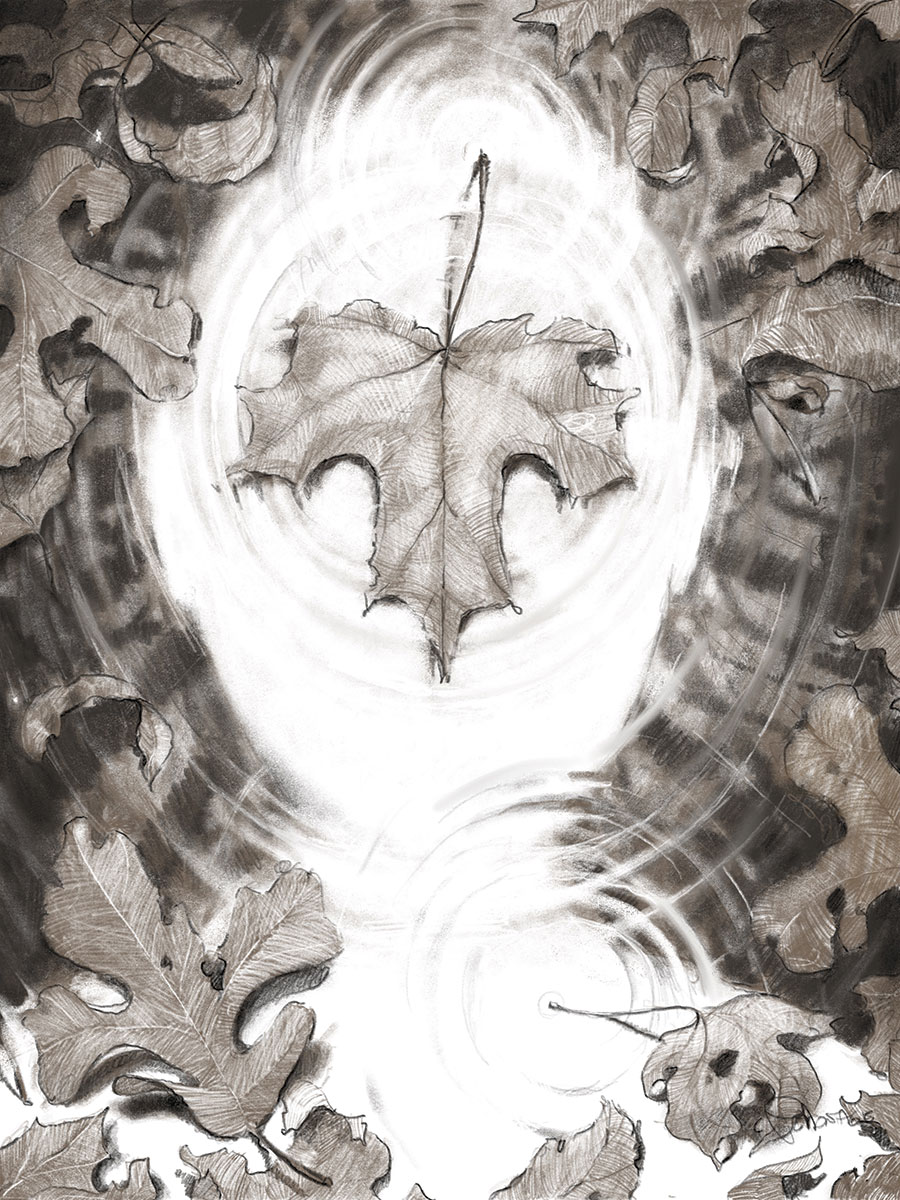Still Life

LLUSTRATION Preston Montague
Closing my eyes at night, searching for peaceful thoughts, I’ll often return to the woodland stream I played in as a child: clear water spilling over rocks, meandering through ferns, filtering through moss, washing sleep over me. Twenty years later, I revisited my childhood stream, curious to see if it had changed as much as I have. Approaching the bank, my ears spoiled the surprise: The voice of the stream, once rich in character, had lost its accent. Peering over the edge, I discovered only a trickle of water, oozing past boulders that had been stripped of fern and moss, stained red by the iron-laden clay calved from the eroded bank.
On the other side of the bank, a tidy row of new houses had replaced the forest, one so close I could see children fighting over video games in the den. Creeping cedar (Lycopodium digitatum), the charismatic groundcover that once covered the forest floor here, had been converted into lawn. Absent any nostalgia, I returned to my car where I found three ticks embedded in my leg. Growing up here, I don’t remember finding three in 10 years.
Back at home, I poured over aerial photographs of the area. During the late ’90s, the forest for which the neighborhood was named was suddenly fragmented into tiny pieces. Roads had grown new cul-de-sacs, transforming the forest into nominal edges around sharply green lawns, asphalt and concrete. Maintaining these edge conditions in a place that wants to be forest keeps that environment in an agitated state. Though edges can be diverse and fertile, they are essentially an inflamed condition.
This fragmentation is also reflected in our lifestyles as busyness becomes a national sport. Struggling to be an MVP myself, I have fallen prey to consumer technology; its alerts and seductions have carved edges into my mind. Along these edges spread invasive species such as false urgency, fear and dissatisfaction, threatening the stillness of mind from which complex connections emerge. This heightened mode of distraction and shallow thinking disrupts the states of mind responsible for creativity, growth and repair. We may be getting busier, but that doesn’t mean we’re getting better.
Slowing down and connecting to deeper, diverse parts of the mind soothes this mental inflammation. Drawing, a form of meditation, helps make this connection, pushing one through edge-thinking and into the forest where the mind can wander. As in any exercise, the artist’s approach to drawing is important in determining which parts of the mind they engage.
Drawing directly, using explicit lines that define a subject, leans toward the shallow mode of the urgent mind. Drawing a subject indirectly, as the negative space between things, exercises parts of the brain that are at home in complexity and helps balance the frantic, demanding mode often favored to navigate the day. To do this, an artist first draws all the surrounding elements of a scene until the subject emerges as the negative space between elements.
This approach to drawing implicitly can feel unfamiliar, and the modern mind will strike back. I ask students in my drawing workshops to take note of how often critical, anxious thoughts invade their minds while drawing a subject in this indirect way, and how that prevents stillness. I encourage students to maintain serenity through deep breathing, allowing invasive thoughts to exhaust themselves, and daydreaming as much as possible.
We naturally resist the slow, complex, pensive habits of our minds in favor of quick, analytic and judgmental thinking. Urgency was once essential for identifying food and fighting, but what makes us human is our ability to also relax, be playful and make creative connections. Displacing the forest with shallow, restless thinking endangers the diversity in our minds and has implications for our health. Drawing, particularly in nature, can sooth our overstimulated minds and strengthen our awareness of — and thus our relationship to — the environment that is so crucial to our health as a species.
Preston Montague is an artist, educator and landscape architect who works on projects that encourage stronger relationships between people and their environment for the purpose of improving public health.

